When I was three months old, I came down with a high fever. Up until that point, I had subsisted entirely on breast milk. But although I lived in a relatively unpolluted environment, I’d picked up contamination from somewhere.
Before long my fever was raging at 104 degrees, and I was so weak I was unable to muster a cry.
I’m grateful that my parents took me to a doctor, who put me on antibiotics. Within hours, my fever was down, and my sickness had reversed.
That antibiotic prescription may have saved my life.
What Exactly Are Antibiotics?
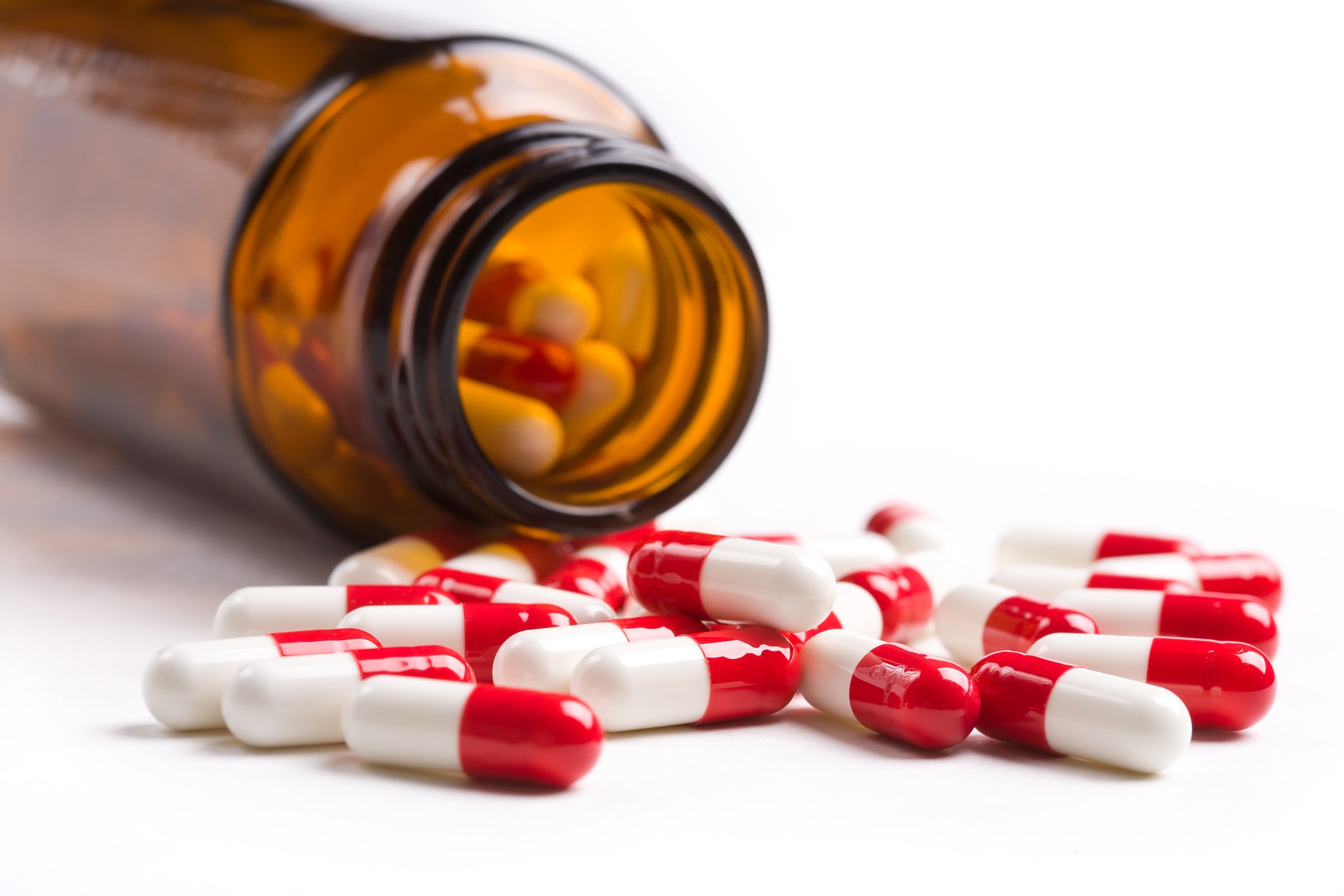
Antibiotics are a class of drugs also known as antimicrobials, which kill bacteria and prevent the spread of bacterial infections.
Alexander Fleming, a professor of bacteriology at St. Mary’s Hospital in London, discovered penicillin — the first antibiotic — in 1928.
He’d been experimenting with colonies of Staphylococcus bacteria growing in Petri dishes. And he noticed that one dish had a spot of mold with a clear ring around it. This ring was a secretion from the mold that prevented further bacterial growth. It turned out to be penicillin.
Fleming and his colleagues worked to isolate penicillin, discovering its ability to attack other bacteria, like streptococcus, meningococcus, and diphtheria bacillus.
In later years, researchers developed new antibiotics that were effective in killing different classes of bacteria.
Altogether, antibiotics have saved millions of lives worldwide — overpowering such potentially lethal diseases as meningitis, tuberculosis, and cholera.
When used appropriately, antibiotics are a blessing and a welcome arrow in humanity’s medical quiver. But the reality is that they’re vastly overprescribed.
According to the CDC, in 2021, health care professionals prescribed 211.1 million antibiotic prescriptions — and many of these prescriptions were unnecessary.
Many health care professionals prescribe antibiotics at an alarming rate. Sometimes they prescribe them without making sure the drug will effectively attack whatever germ is involved — or without confirming that it is a bacteria and not a virus. (Antibiotics are completely ineffective against viral infections.)
And this lax approach doesn’t come without consequences.
The Dark Side of Antibiotic Use
Antibiotics don’t just target harmful bacteria in your body. They’re destructive to all microbes, which can leave your body’s natural microbiome unbalanced and damaged.
And this ecosystem won’t always go back to normal unless you consciously make an effort to make it so. Odds are, if your microbiome is currently out of balance, past antibiotic use has significantly contributed to your condition.
It’s also likely that the health care professionals who prescribed those antibiotics to you didn’t discuss how to counteract the collateral destruction of good bacteria in your body.
A couple of years ago, I was considering taking antibiotics to fight a strep infection. I asked my doctor if he could recommend any protocol for repopulating my body with healthy bacteria.
He replied that he didn’t learn anything about that in medical school, so he couldn’t offer me any advice. “My wife took a nutrition class online,” he told me, “so she’d be a better person to ask.”
It’s pretty crazy, if you think about it, that our medical system is so good at destroying a bacterial ecosystem but so ineffective at rebuilding it.
How Antibiotic Overuse Is Creating “Superbugs”
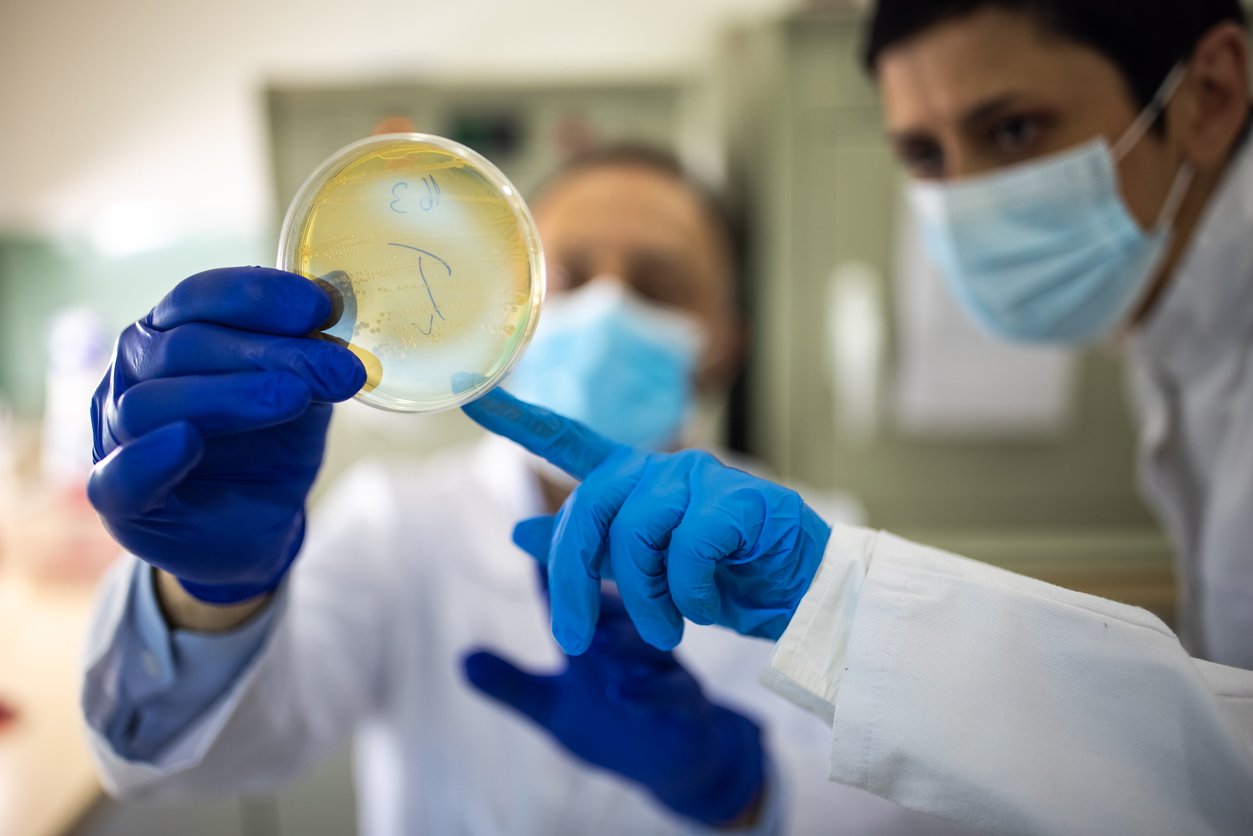
Not only do antibiotics damage good bacteria, but their overuse encourages antibiotic resistance, or the the widespread development of “superbugs” that don’t respond to antimicrobial drugs.
Bacteria, you see, are very much like accountants. No matter how much you change the tax laws, there will always be wily accountants who will find a way around them to escape taxes. Similarly, when you increase the dose of antibiotics or engineer new ones, some bacteria will find a way to mutate and resist them.
As a consequence of antibiotic overuse, we’ve had to start turning to “last-line” antibiotics, or medications typically only used as a last resort when the usual medications no longer work.
These drugs are meant to be used sparingly in human medicine to limit bacterial exposure to them, in the hope of preventing the development of antibiotic resistance. Unfortunately, because antibiotic resistance has increased, the prescription of last-resort antibiotics has also increased.
Antibiotic Resistance Can Be Deadly
Antibiotic resistance is leading to more and more deaths that were once preventable. That doesn’t sound like the kind of progress we’ve come to expect from the field of medicine.
In the United States, nearly three million people contract an antibiotic-resistant infection each year — with more than 35,000 people dying. Worldwide, antibiotic-resistant microbes are estimated to cause nearly five million deaths per year. And these numbers are rising.
Superbugs now threaten to make many common infections, such as urinary tract infections and pneumonia, lethal once again.
Many public health authorities fear that we could be on the verge of entering into a “post-antibiotic world” that threatens to kill millions of people annually by 2050. Antibiotic resistance already costs over $55 billion in medical treatment and hospitalizations just in the US. And this number is expected to rise dramatically in the coming decades.
It shouldn’t come as a surprise, then, that the World Health Organization has declared antibiotic resistance to be one of our greatest global threats to health, security, and development.
But is the medical overuse of antibiotics really the primary cause of the rise of the phenomenon of antibiotic resistance?
Antibiotics and Livestock

Factory farms, also known as Concentrated Animal Feeding Operations (CAFOs), were created as a way to keep up with an enormous demand for animal products that’s emerged in the last century.
Modern farms look far different from farms of the past. The images that leap to mind when many of us think of a farm — the iconic red barn or a green pasture full of animals happily grazing in the sun — no longer represent how most farm animals spend their lives.
To say that animals in CAFOs endure close quarters and overpopulation would be an understatement. The average chicken raised for meat has less than one square foot of space per bird. And modern broiler operations have bred birds to grow so quickly that they often become unable to walk. As a result, these birds spend their lives sitting in feces. Animals regularly get sick, injured, and even die as a result of these miserable conditions.
So how do modern CAFOs cope with the threat of disease wiping out their livestock? Antibiotics to the rescue! Antibiotics are routinely administered (through injections or medicated feed) not just to livestock who have become sick, but rather to every single animal housed in these filthy and brutally inhumane conditions.
In addition to helping keep animals alive in an unsanitary environment, antibiotics serve another purpose, too. It turns out that antibiotics make animals gain weight faster — which increases producer profits.
How Do Bacteria Become Antibiotic-Resistant in CAFOs?
Unfortunately, antibiotic resistance and livestock go hand in hand. When bacteria have continual exposure to low doses of an antibiotic, any of the microbes that are resistant to the drug will survive and reproduce. The rest die off, resulting in a new bacteria population resistant to the antibiotic.
Modern factory farms provide continuous low doses of antibiotics to billions of livestock — thus creating the perfect conditions for breeding antibiotic-resistant bacteria.
If, for some diabolical reason, someone wanted to create conditions that would breed antibiotic-resistant bacteria, they would be hard-pressed to do better than the conditions prevalent in industrial meat production today.
The Truth About Food Recalls

Already, the breeding of bacteria that are resistant to antibiotics in modern meat production is hurting human health in many ways.
Have you ever gotten sick after eating at a restaurant? It’s an experience that’s not easy to forget. You just ate the most delicious meal, yet hours later, you’re regretting ever leaving the house that day.
Foodborne illnesses — such as salmonella, listeria, and E. coli — affect one in six Americans every year. That’s more than 55 million people annually. About 128,000 of them have to be hospitalized for their symptoms. And 3,000 of these people end up dying.
Two of the most common foodborne pathogens, Salmonella and Campylobacter, cause a combined 660,900 antibiotic-resistant infections in the United States each year.
Where do these bacteria come from? The truth is most pathogens that cause food poisoning originate with the intensive, confinement-based livestock production methods used in factory farming.
The US federal government tests supermarket meats to track trends in bacteria and resistance. According to the Environmental Working Group, 73% of bacteria that FDA testing found on ground turkey were resistant to tetracyclines, the most widely used antibiotic in farm animals and a critical medicine to treat serious bacterial infections in humans.
Additionally, one in five strains of Salmonella in chicken meat were resistant to amoxicillin — the second most frequently used antibiotic on farms and the number one medication prescribed to children. And 1 in every 25 packages of raw chicken is said to have Salmonella contamination, according to the CDC.
E. coli has also been found to contaminate 40% of raw chicken samples tested. But beef is the most common source of E. coli exposure for humans. This bacteria is thought to cause up to 85% of urinary tract infections each year. It’s also a major part of the Salmonella risk.
What About Food Recalls from Vegetables?
“But, wait!” you say. “What about the E. coli that have been found in plant foods, like romaine lettuce or tomatoes? Aren’t vegetables as risky as animal foods?”
It’s a reasonable question to ask, given the media coverage of E. coli outbreaks. But the truth is, E. coli lives in the intestines of animals.
Last I checked, romaine lettuce and tomatoes don’t have intestines. The only way any vegetable can be linked to E. coli is to be contaminated by the feces of animals.
Usually, this contamination happens because there’s a factory farm upstream (or up-manure) from a vegetable farm. It’s remarkable how often these plain facts are not conveyed in media coverage of E. coli scares.
Pathogens, like E. coli and Salmonella, are abundant in animal waste, which can run downhill during a rainstorm or seep into underground aquifers, ultimately getting into nearby water systems that spread the pathogens elsewhere.
These hardy pathogens can spread not only to raw meat products but also to produce (through water or soil contamination) and to cooking surfaces where food is prepared. When you consume this contaminated food, that’s when you may get sick.
The largest multistate E. coli outbreak in over a decade, related to romaine lettuce, occurred in the spring of 2018. It ended up affecting people in 36 states, resulting in 210 illnesses, 96 hospitalizations, and 5 deaths. What caused it? All evidence points to a large industrial cattle farm near the affected romaine crop in Yuma, Arizona.
How Factory Farming Drives the Problem with Antibiotics
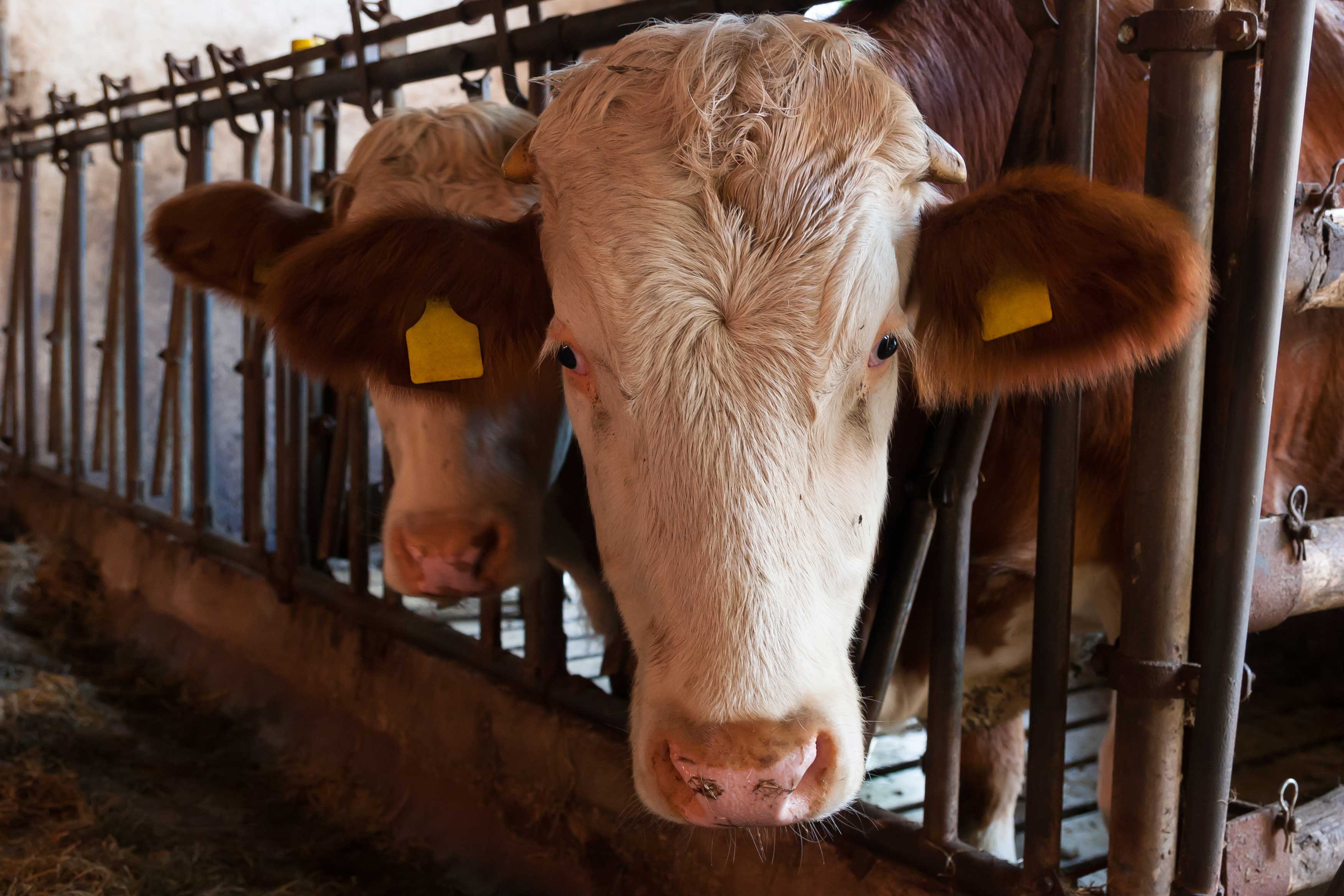
It’s true that antibiotics are overprescribed to people, and that is a problem. But antibiotics are used and abused even more egregiously in animal agriculture.
According to a study in the Proceedings of the National Academy of Sciences in 2015, the world uses about 63,000 tons of antibiotics each year to raise cows, chickens, and pigs. That’s roughly twice as much as the volume of all antibiotics prescribed by doctors globally to humans.
In fact, 80% of the antibiotics used in the United States are not given to sick humans, but to animals on CAFOs.
And antibiotics are typically NOT used to cure disease on CAFOs. Rather, they’re used to promote growth or prevent diseases from keeping animals in unsanitary conditions.
What’s worse, last-resort antibiotics for humans are commonly used in CAFOs. So it’s no wonder that resistant bacteria are rampant in industrial meat products. Antibiotics in food production are making things worse for people and animals.
Regulatory Efforts Have Been Botched
Attempts have been made to better regulate antibiotic use in CAFOs.
In January 2012, the FDA prohibited the use of cephalosporins in food animals. This didn’t make much difference, though, because this class of antibiotics makes up less than 1% of the antibiotics used in the United States on food animals every year.
A study published by researchers at Ohio State University in 2016 warned of the very real potential of a post-antibiotic age. The study was sparked when bacteria that was resistant to last-line antibiotics was found on a Midwestern hog farm.
The FDA eventually took action in 2017, stating that farmers were no longer allowed to give antibiotics to animals for the purposes of weight gain, nor could they buy antibiotics without the oversight of a veterinarian.
But even after the 2017 attempt to crack down on CAFO antibiotic use, government records show that things haven’t changed as much as many had hoped. While sales of antibiotics for agricultural purposes dropped right after the 2017 ban on use for growth promotion, they’ve been increasing in the last few years. Officially, there’s no ban on using antibiotics to prevent or treat diseases in animals — and so many animals in CAFOs are unhealthy, that this could potentially allow for very widespread use. The fact is that many companies that pledged to reduce antibiotics in the food supply haven’t followed through.
Beef suppliers for some of the largest fast-food corporations, like McDonald’s and Taco Bell, are still using the highest priority, critically important antibiotics (HP-CIAs) on farm animals, despite the risks to human health. USDA testing shows that between 2017 and 2022, all 10 of the biggest meat packers in the US were using at least one HP-CIA on livestock. And according to reporting by The Guardian, the dosages used are identical to the ones used previously to fatten up cattle.
Because there’s no universal ban on antibiotics in the food supply, companies seem likely to continue finding ways to exploit regulatory loopholes. As a result, there are still antibiotics in food that come from animals. And there are more instances of antimicrobial-resistant bacteria in the food supply.
Antibiotics Aren’t Only Used for Land Animals
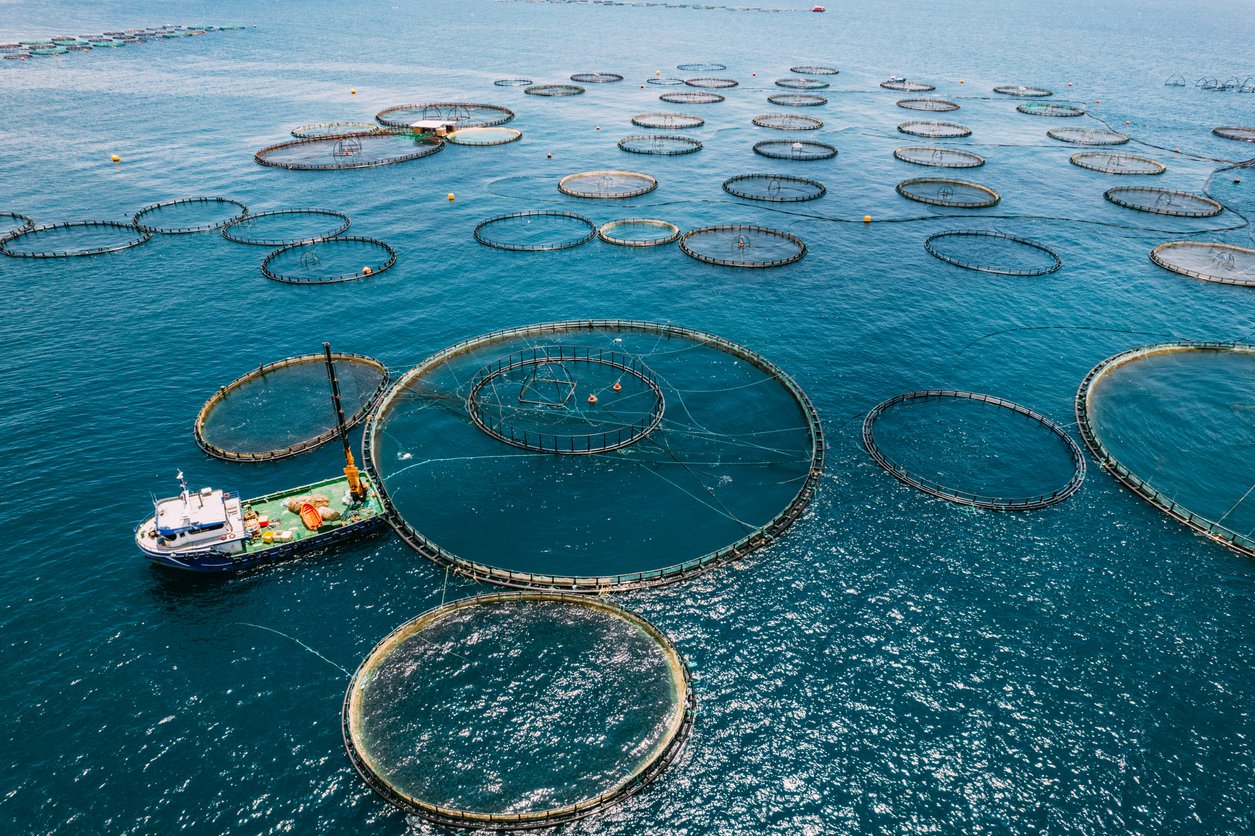
Just as we’ve industrialized agriculture for land animals, we’ve done the same to aquatic animals. And although fish aren’t what typically comes to mind when we envision factory farms, that doesn’t mean that farmed fish are living in better conditions. Antibiotic use runs deep in the aquatic environment, too — and so does antibiotic resistance.
Farmed fish are often packed tightly together in huge, unsanitary pools. Just as happens in the factory farming of land animals, the fish are given antibiotics (and other drugs, like pesticides) to prevent the spread of disease.
A 2015 study published in the Journal of Hazardous Materials sheds light on this hidden problem. Researchers looked at 27 fish from 11 countries. The researchers found residues of five antibiotics — including tetracycline and other drugs used to treat human infections.
Remarkably enough, they even found residues in farmed fish with an antibiotic-free label. It turns out that farmed fish don’t have to be given antibiotics directly to carry them because many are eating antibiotic-contaminated fish meal.
Levels of antibiotics and antibiotic-resistant bacteria in seafood have exploded in the past 30 years.
You can read more about this topic in our article, The Truth About the Health and Environmental Impacts of Eating Fish.
What Can You Do About Antibiotic Resistance?
The hope, of course, is that one day, governments will take stronger action against antibiotics in food, particularly, their use on factory farms.
Some countries have done so already, including Denmark, Sweden, Germany, and the Netherlands. And they are seeing significant reductions in antibiotic overuse.
Whether or not government policy grows more enlightened, we can all take positive actions now to help preserve the efficacy of antibiotics and to support better industrial food practices.
The most significant contribution we can each make is to transition to a plant-powered diet. And for those who opt to consume animal products, it’s best to go organic since the use of antibiotics is not permitted under organic certification. If enough of us make these changes, we’ll drastically reduce consumer support for industrialized animal agriculture — the inhumane industry that’s fueling this public health crisis.
The American Society for the Prevention of Cruelty to Animals (ASPCA) has made avoiding factory-farmed animal products easier than ever with this handy Shop With Your Heart Grocery List.
How to Change the Future Right Now
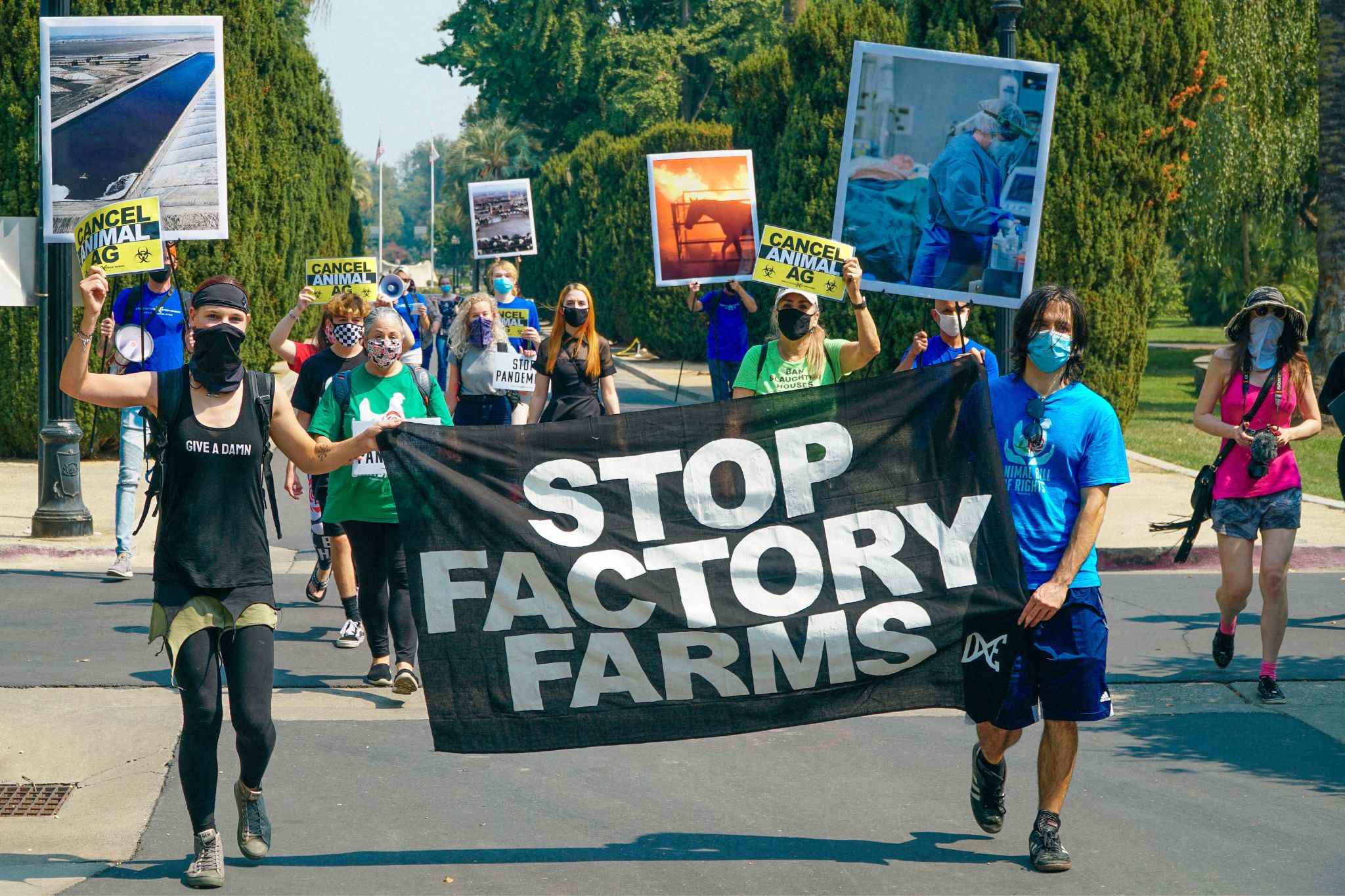
Antibiotics are a miracle of medicine. But now, thanks to factory farming, antibiotic overuse has become a driver of what could become one of the most terrifying public health emergencies in history.
Unless we take action to preserve the viability of antibiotics for future generations, millions of lives will be lost.
The problem of antibiotic-resistant bacteria isn’t one that any of us can solve all by ourselves. Slowing its spread is going to take collective action from governments, farmers, corporations, and concerned citizens around the world. It’s also going to take reducing the frequency with which doctors prescribe antibiotics to humans.
But just because you and I can’t solve it all by ourselves doesn’t mean we should refuse to do what we can.
As a concerned citizen who wants a safe future for humanity, the number one step you can take is to boycott factory-farmed animal products. You can also go a step further and urge restaurants and supermarkets to do the same.
We should ensure a future in which, if a crisis arises, every baby’s life can be saved by these miracle drugs the way mine was when I was three months old.
Tell us in the comments below:
- Have you ever encountered antimicrobial resistance?
- Does this help you understand antibiotic resistance and how antibiotic use on factory farms affects humans?
- What did you find useful, interesting, or surprising in this article?
Featured Image: iStock.com/branex



